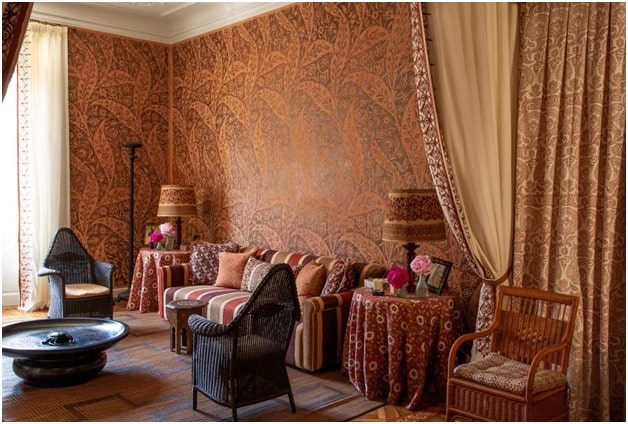The Role of Textiles In Interior Design: From Rugs to Curtains
4 min read
When it comes to creating an aesthetically pleasing and harmonious living space, interior designers understand the significance of every detail. Among these details, textiles play a pivotal role in transforming a house into a home.
From the soft embrace of a cozy rug underfoot to the graceful sweep of curtains framing a window, textiles have the power to infuse personality, warmth, and functionality into any interior design. In this blog post, we delve into the multifaceted role of textiles in interior design, exploring their diverse applications, visual impact, and the emotions they evoke. Contact the best interior design dubai company to décor your home in modern luxury style.
Texture and Sensory Appeal
Texture is a key element in interior design, and textiles excel in providing various tactile experiences. Rugs made from plush materials like wool or shag bring an immediate sense of comfort to a room, inviting inhabitants to walk barefoot and indulge in a tactile sensation. Similarly, curtains crafted from luxurious fabrics like silk or velvet introduce a soft and delicate texture that draws the eye and encourages touch. By incorporating textiles with differing textures, interior designers can create visual and sensory contrast, enhancing the overall ambiance of a space.
Color and Pattern
Textiles offer an incredible range of colors and patterns, enabling interior designers to introduce depth, contrast, and thematic elements to a room. A neutral room can be instantly enlivened with the addition of vibrant throw pillows or a patterned rug. On the other hand, bold patterns on curtains can serve as a focal point, tying together various design elements within a room. The choice of textiles allows designers to express their creativity, harmonizing color palettes and creating a cohesive visual story that resonates with the inhabitants.
Functional Divisions
Textiles also serve as functional tools in interior design, aiding in the division of spaces. Open-concept homes can benefit from area rugs that demarcate distinct living zones. By placing a large rug beneath a seating arrangement, designers can define a cozy conversation area within a larger room. Similarly, curtains can be employed to create privacy or separate spaces temporarily. Sheer curtains allow light to filter through, maintaining a sense of openness, while heavier drapes provide a sense of seclusion and intimacy.
Acoustic Control
In contemporary interior design, where open spaces and minimalistic aesthetics prevail, controlling acoustics is crucial. Textiles play an unexpected yet vital role in sound absorption. Thick rugs, upholstered furniture, and curtains with heavy linings can help mitigate sound reflections, reducing noise levels and creating a more serene environment. This function is particularly valuable in high-ceilinged rooms that tend to amplify sounds.
Visual Cohesion and Harmony
Textiles offer a unifying element that can tie together disparate design elements within a space. When selected thoughtfully, textiles can establish a sense of continuity, connecting various design aspects such as furniture, wall colors, and decor items. For instance, integrating cushions with the same fabric as the curtains can establish a harmonious flow between different parts of a room, resulting in a visually balanced and cohesive design.
Light Manipulation
Curtains, drapes, and blinds are essential tools for managing natural light. Different textiles allow for varying levels of light filtration, giving designers control over the ambiance of a room. Sheer curtains diffuse harsh sunlight, casting a gentle glow that creates a serene atmosphere. On the other hand, blackout curtains provide complete darkness, which is especially beneficial in bedrooms to ensure a restful sleep environment.
Emotional Impact
The emotional impact of textiles is profound. Soft, plush textiles elicit a feeling of comfort and relaxation, making a room feel inviting and nurturing. On the contrary, crisp and structured textiles can convey a sense of formality and elegance. By choosing textiles that resonate with the intended emotions for a space, designers can effectively communicate the desired mood and atmosphere to its occupants.
Conclusion
In the realm of interior design, textiles go beyond their utilitarian aspects, serving as a creative canvas for designers to infuse their spaces with personality, warmth, and functionality. From the warmth of a cozy rug underfoot to the elegant drape of curtains framing a window, textiles have a transformative power that influences every aspect of a room.
With their ability to manipulate texture, color, light, and even sound, textiles are an indispensable tool in a designer’s toolkit. By understanding and harnessing the potential of textiles, designers can craft spaces that not only look stunning but also cater to the emotional and sensory needs of the inhabitants, turning houses into homes that reflect the essence of those who dwell within.






